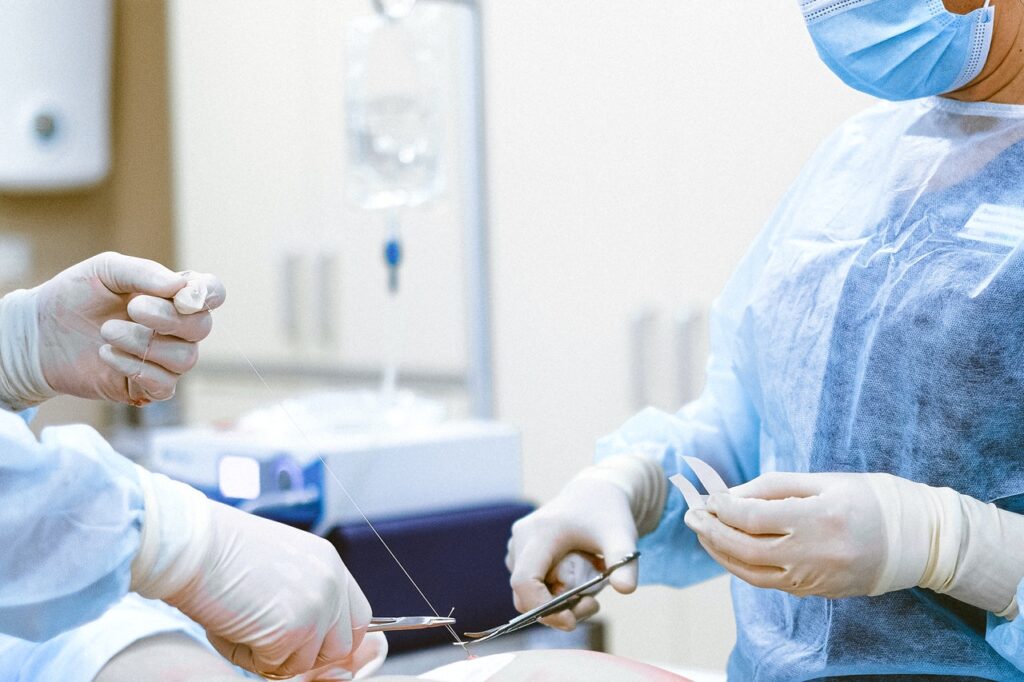In the past, spine surgery involved huge incisions, extended periods of recuperation, and agonizing rehabilitation. We are fortunate that recent advances in medicine, such as microdiscectomy, have made the procedure less invasive.
A microdiscectomy, also known as microdecompression or microdiscectomy, is a less intrusive surgical therapy that is given to patients who have a herniated lumbar disc. These patients receive the procedure.
To relieve pressure on the spinal nerve column and perform this treatment, small parts of the herniated disc will be removed during the operation.
- Who may benefit from having a back surgery microdiscectomy?
A study that was conducted in 2015 found that microdiscectomy, a therapy for herniated discs, was successful in the long-term for around 84 percent of patients who had the procedure.
Sciatica is a painful condition that is caused by compression of the spinal nerves. The herniation of a lumbar disc is often the root cause of this compression.
As the hernia worsens and the wounded tissue travels into the spinal column, pressure is applied to the nerves in that area. After then, messages of pain are sent to the brain via the nerves. It is hypothesized that the soreness originates in the legs.
Within a few weeks, the vast majority of people who suffer from sciatica will recover naturally and without the need for surgery. If the pain caused by sciatica continues for more than 12 weeks, a microdiscectomy can be helpful.
A microdiscectomy does not work to alleviate the patient’s back discomfort.
- Time spent recuperating
When compared to other, more invasive procedures, the recovery time for this one is much shorter. The vast majority of patients probably plan to check out of the hospital the same day or within the next twenty-four hours.
You may meet with both a physical therapist and an occupational therapist before you are discharged from the hospital. Your back will thank these therapists for teaching you how to reduce the amount of bending, lifting, and twisting that you do with it.
The therapist may suggest exercises to improve the flexibility and strength of the muscles that surround the spine.
Right after surgery, you won’t be able to drive, sit for long periods, lift anything heavy, or stoop over. You also shouldn’t lean over. Even while you won’t be able to immediately go back to your usual activities, you shouldn’t have to make too many adjustments to your lifestyle.
It is possible that during the first week or two of recuperation, you may need to reduce the amount of work you are doing or take time off from your job. In addition, you will need to refrain from carrying anything heavy for anywhere between two and four weeks after the procedure. Typically, this refers to anything that weighs more than 5 pounds.
Your doctor may also tell you to ease back into your usual workout routine gradually. For the next two to four weeks after the treatment, it’s possible that you won’t be able to participate in any kind of physical exercise or enjoy your hobbies. Around six weeks is the average time needed to make a full recovery.
- How much does spine surgery cost?
A microdiscectomy is a complex operation that can only be performed by a physician with the appropriate level of training. As a consequence of this, it may be more expensive than other back procedures.
The surgical treatment may be purchased for anywhere between thousands and lakhs. It’s possible that follow-up therapy or visits are not included in this fee.
After you have met the requirements of your deductible and paid your coinsurance, your health insurance may cover a significant portion of the remaining cost.
If you do not have health insurance, you should have a conversation with your hospital, your surgeon, and any other medical professionals before going through with the operation. Because you are paying for this out of pocket, you should enquire about the possibility of negotiating a lower fee.
- In what manner is the procedure carried out?
A micro discectomy is performed to remove disc material that is exerting pressure on the nerves.
The procedure is carried out when the patient is under the influence of general anesthesia. You will be unconscious throughout the whole procedure and unable to feel anything while you are under anesthesia. During the therapy, the patient is positioned such that they are facing down. The following outlines the procedure:
An incision of one to one and a half inches will be made directly over the problematic disc.
To examine the area that is injured, your surgeon will use a microscope that has light.
The surgeon may remove some of the bone that’s shielding the nerve root.
To relieve pressure on the nerve, your surgeon will use a device that resembles scissors to cut away the damaged herniated tissue and then remove it.
The cut has been repaired with stitches.
In most cases, the patient is discharged the same day or the morning after the next day.
Any pain that was brought on by nerve compression should go away now that there is adequate space for the spinal nerve to occupy within the spinal column.
Conclusion:
The micro discectomy is a successful pain-relieving procedure that only requires a little amount of surgical invasion. If the majority of people suffering from sciatica do not respond to non-surgical treatment, then a micro discectomy may be required as a last resort if all other treatments are unsuccessful.
To determine whether or not you might benefit from the procedure, your doctor will do a thorough assessment of your unique situation. If you are a candidate for surgery, you and your doctor should discuss the potential benefits as well as dangers of the procedure.




